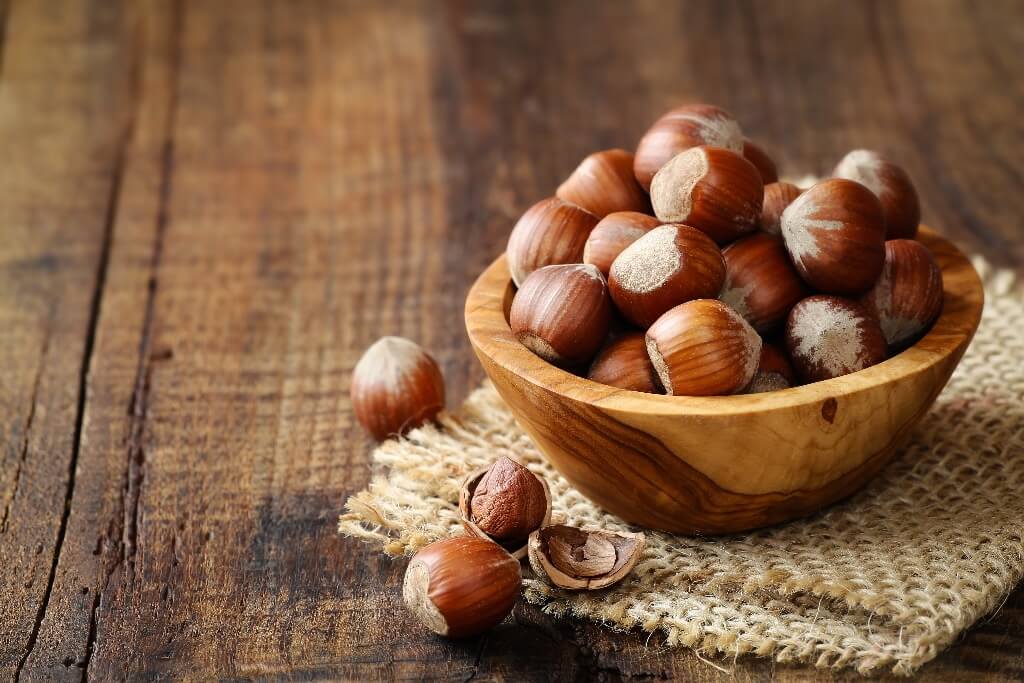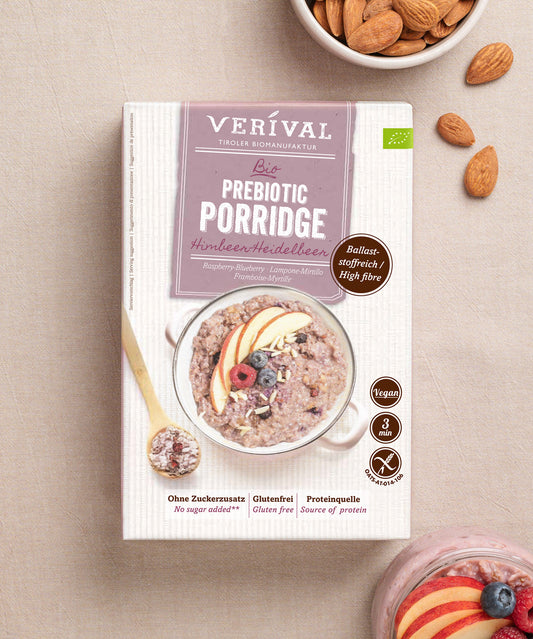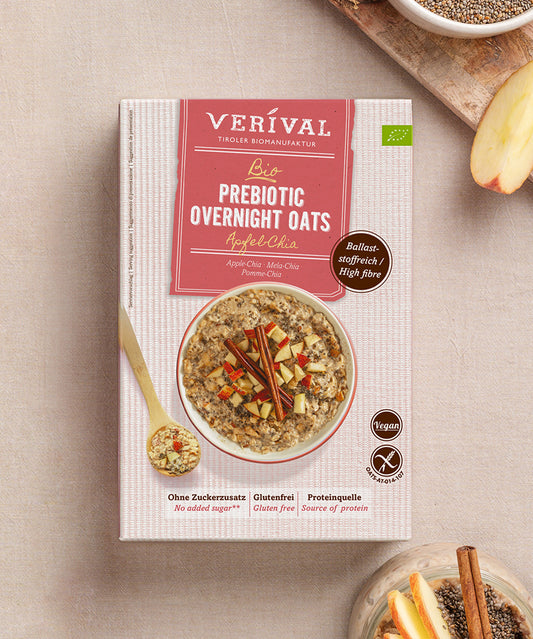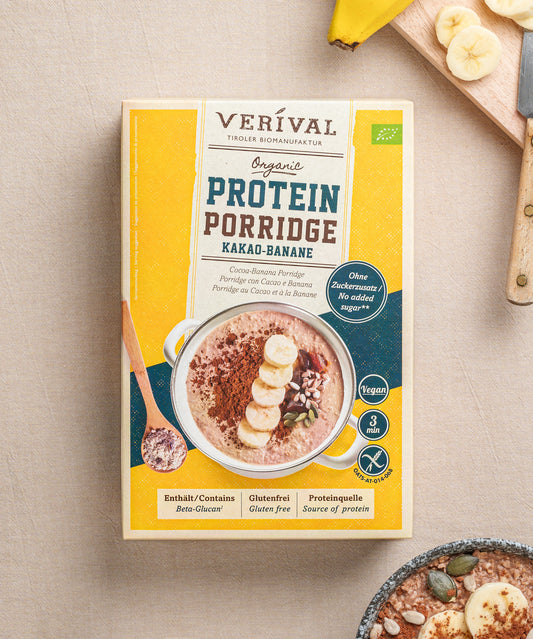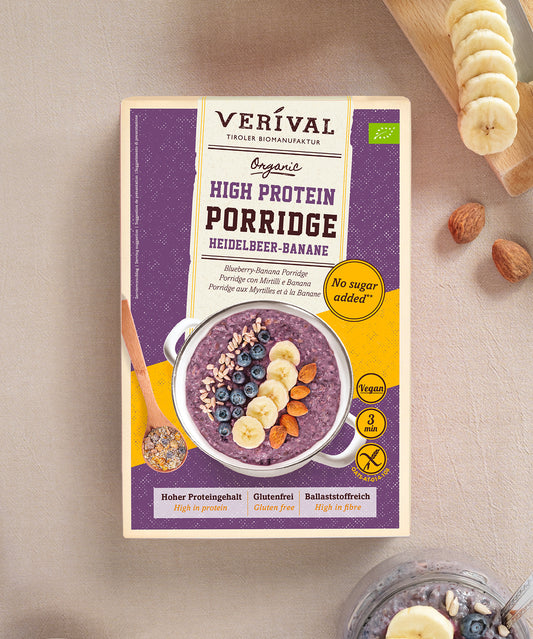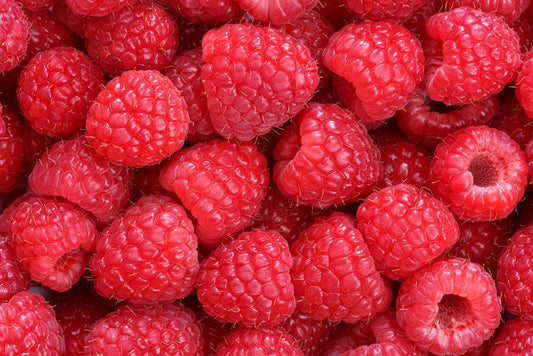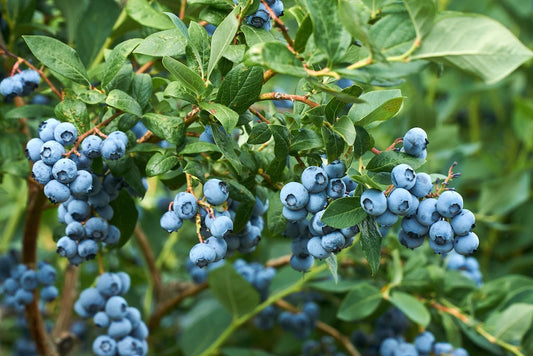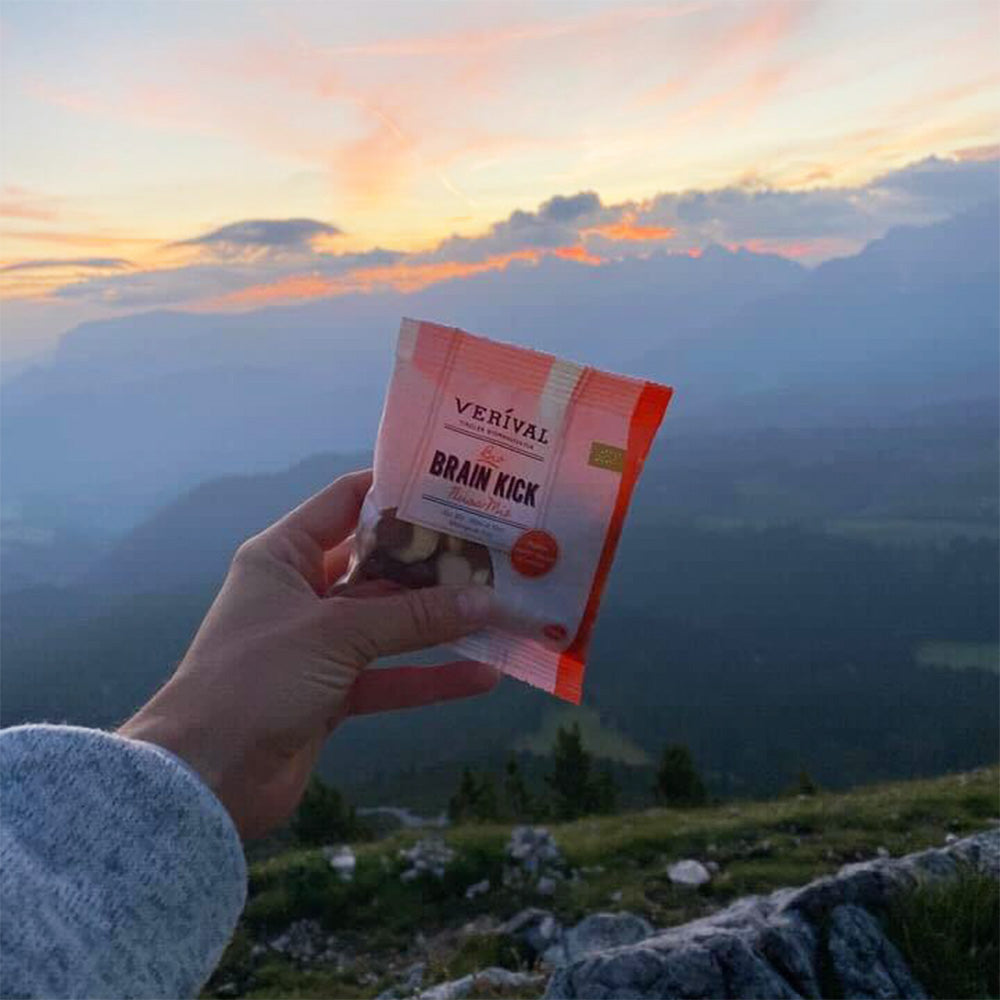In this blog post you will learn everything you need to know about hazelnuts. Find out what nutrients hazelnuts contain, where they come from, how healthy they are and which dishes they are used in.
Learn how to handle nuts and why they are the perfect snack for when you are feeling low. Find out why nuts in general are good for you and your body.
Discover our Verival organic hazelnuts
The hazel bush – hazelnuts
The shrub on which the hazelnut grows is the so-called ‘common hazel’ or ‘hazelnut bush’. It belongs to the birch family, grows to a height of about 5 metres and can live for up to 100 years.
The hazel bush originally comes from Asia Minor, but also from Europe. Today, the hazel bush and the hazelnut can be found in Europe, Asia and the USA. The hazel is a very robust plant and can also be found in Austria. Hazelnuts are even considered to be one of the oldest plants in Europe.
The hazelnut season is from September to January. The fruit is only ripe when it has turned brown and has fallen to the ground of its own accord. The bush does not flower in spring like most plants, but rather from February to March.
The hazelnut product has a good CO2 balance. The CO2 balance includes the production site, production method, transport, storage, processing and packaging of the hazelnuts.
Why are hazelnuts so healthy?
Hazelnuts, like so many other types of nuts, are considered to be nerve food and are therefore often part of student food. But why are these little nuts so healthy for the brain? Hazelnuts contain a high level of lecithin, which has a positive influence on nerve function and memory. The magnesium, fatty acids, vitamin E and niacin content is also important for the nerves and the brain.
Hazelnuts also contain fatty acids and vitamins such as calcium, phosphorus and iron. The two minerals calcium and phosphorus strengthen our bones and ensure healthy teeth. The increased iron content is also clearly a great property of the nut.
The hazelnut also has a relatively high fibre content, which has a positive effect on digestion.
In addition to the positive influence on memory, eating hazelnuts also has a positive effect on cholesterol levels and blood pressure. Hazelnuts are also a real vitamin miracle. 50 grams of hazelnuts contain and cover the daily requirement of vitamin E. Vitamin E has mainly an antioxidant effect in the body, but also has an anti-inflammatory effect and supports the immune system. Vitamin E therefore has an important function in hazelnuts.
The unsaturated fatty acids in the nuts strengthen the heart and blood vessels. These fatty acids in the hazelnuts have several advantages. Unsaturated fatty acids can reduce the risk of developing cardiovascular diseases.
However, due to their high fat content, hazelnuts also have many calories. Hazelnuts are a real calorie bomb. So if you want to lose weight, you should make sure to eat only small amounts of these little nuts. In general, however, hazelnuts are healthy for the body and mind.
With a protein content of 12 g per 100 g, the hazelnut is also rich in protein. But the hazelnut is also rich in fatty acids. This is particularly interesting for a vegan and vegetarian diet.
If you want to learn more about different nuts and their positive properties, click here.
The nutritional value of the hazelnut
Are hazelnuts suitable for people with nut allergies?
People with nut allergies in particular should not simply indulge in the hazelnut without thinking, because it can trigger allergies. Especially people who are allergic to birch pollen should be careful, as cross-reactions can occur.
Possible symptoms include swollen eyes and lips or an irritated stomach. Unfortunately, in extreme cases, the consumption of hazelnuts can also have life-threatening consequences.
Handling hazelnuts
We recommend buying hazelnuts that are certified organic, such as our hazelnuts. Our hazelnuts are 100% (100 per cent) certified organic. They are ideal for vegetarians and vegans.
Nuts generally tend to go mouldy or rancid quickly. The latter is mainly due to the high fat content (unsaturated fatty acids are present). You can recognise rancid nuts by their smell or taste. If hazelnuts are mouldy, they taste bitter.
It is therefore particularly important to store hazelnuts correctly. This means keeping them closed in a cool, dry, dark place. Ground or sliced hazelnuts should be used up fairly quickly. If the nuts are stored correctly, they should keep for a year.
So when I buy hazelnuts, how can I be sure that they are not yet bad? For whole nuts in the shell, there is the so-called shake test. To do this, shake the nuts. If it rustles, it means that the hazelnut is no longer good. A fresh hazelnut lies against the shell.
Opening hazelnuts
I have found a hazelnut in its shell, but I don't have a nutcracker at home. How can I open it? The best way is to wrap the hazelnut in a towel, place a rolling pin or wooden spoon on top and hit it with the flat of your hand. The shell should then be open. After the fresh hazelnut has been cracked, the hazelnuts should then be dried for another 4-6 weeks.
How can I prepare hazelnuts?
The kitchen is no longer imaginable without the hazelnut. We use hazelnuts in so many different recipes, such as cakes, chocolates, biscuits or even as a puree. But hazelnuts can also be used simply as a snack between meals.
There are so many different ways to use the little nut. In most recipes, the hazelnuts are roasted or ground, especially for baking and decoration. For example, we use grated hazelnuts in our recipe for gluten-free Bircher pancakes.
They are also great as a topping with oat flakes for our muesli, porridge or granola. A healthy breakfast. Oil made from hazelnuts is also particularly popular.
Hazelnuts can also be used in savoury dishes, for example in bread, in pesto instead of pine nuts or in chicken dishes.
Hazelnut cream is also highly recommended. And for those who want to avoid palm oil and therefore do not want to use the well-known hazelnut cream: there are numerous alternatives here. You can also make your own healthy and vegan hazelnut chocolate spread.
Hazelnut milk
Since many people today avoid cow's milk, there are already many plant-based alternatives. In addition to soy, oat and rice milk, there are also many nut-based drinks, such as almond milk or cashew milk.
In this case, the nut drinks do not contain any milk. Hazelnuts can also be used to make delicious hazelnut milk. Due to its sweetness, it is well suited for desserts. However, the hazelnut drink is also good for cappuccinos because it can be easily frothed.
You can also easily make your own vegan hazelnut milk. To do this, it is best to soak about 100g of hazelnuts in water overnight. After the hazelnuts are nice and soft, you can drain the water.
Put the hazelnuts in a blender with a sweetener of your choice (you can use dates, agave syrup or date syrup, for example) and 1 litre of water. Blend the ingredients well until they have turned into a fine milk.
Finally, pour the hazelnut milk through a sieve or use a nut milk bag to remove small pieces from your milk.
Find out how to make other plant-based drinks yourself here.
Our Verival hazelnuts
The hazelnut variety we source has the beautiful name Atababa. It is an old variety that is less susceptible to pests. The shrubs are between 4 and 15 years old. Find out where our hazelnuts come from and in which products we use hazelnuts.
Where do our hazelnuts come from?
For a long time, we imported our hazelnuts from Turkey. Now, however, we buy them from a German company that purchases the products from Azerbaijan. The company supports small hazelnut farmers there. The hazelnut fields are located in the Caucasus, in the part of Azerbaijan that borders Russia and Georgia.
Why Azerbaijan and not Turkey? The country in Western Asia has a climate that is very favourable for hazelnuts. In Turkey, there is the problem that frost often sets in relatively late, which impairs the growth of the hazelnuts. This problem does not exist in Azerbaijan. In addition, the shell of our current hazelnut variety sticks better and is therefore less susceptible to going rancid or mouldy.
Our hazelnuts are collected partly by hand and partly by a kind of vacuum cleaner that immediately removes leaves and branches. Then the nuts are dried and only when our German supplier requests them are they freshly cracked. They are then delivered to Germany, where our partner either delivers them directly to us or processes them first, for example into ground nuts.
In which Verival products can hazelnuts be found?
At Verival, we also appreciate the benefits of hazelnuts and have therefore incorporated them into some of our products. For example, hazelnuts are included in our Bircher Muesli. Our Grain Free Sport Muesli Almond Fig, a gluten-free and vegan muesli made from seeds, nuts and fruits, also contains hazelnuts.
But it is not just some of our mueslis that contain hazelnuts. Our nut mixes Early Bird and Smart Start and our Guten Morgen Energiekick also consist partly of hazelnuts.

